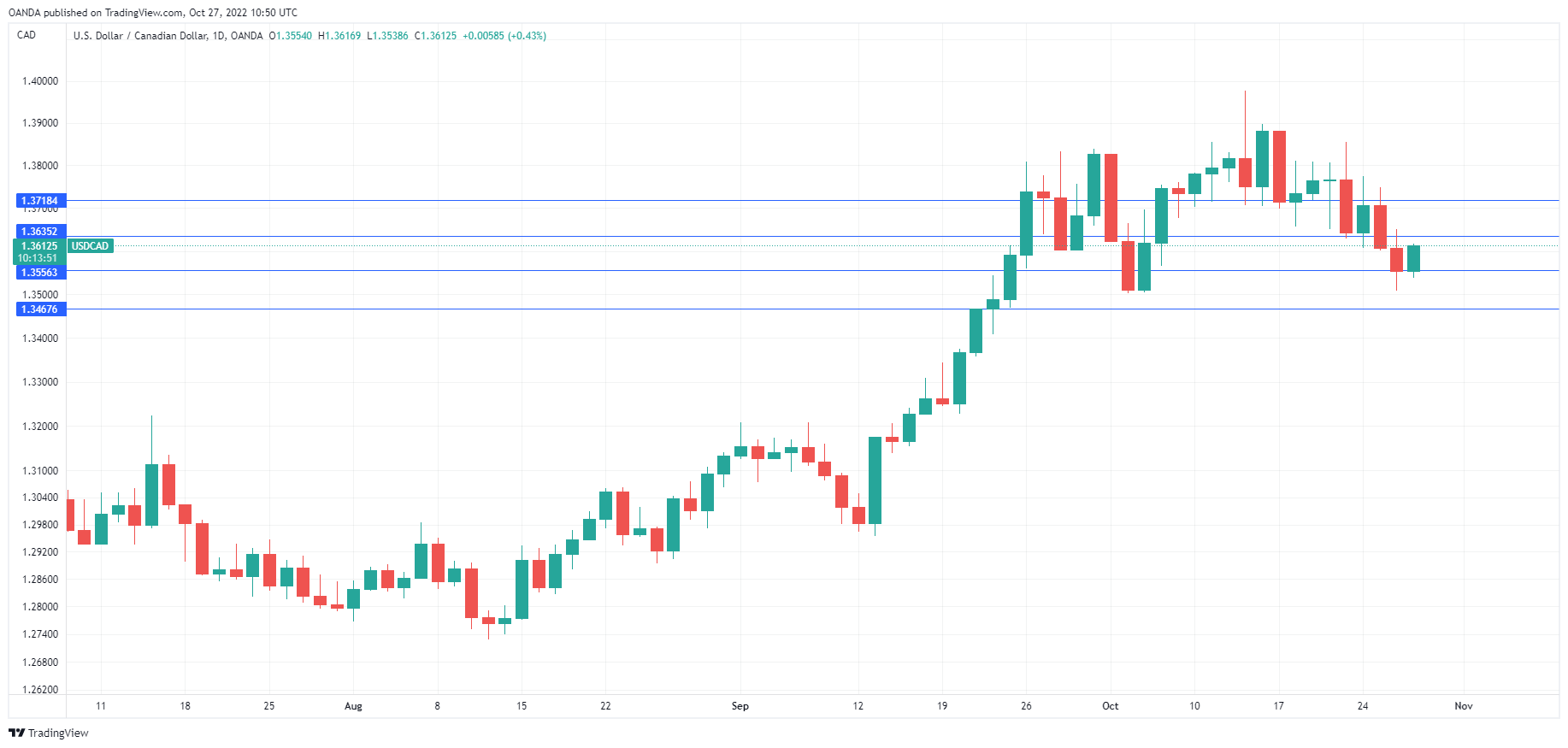The Canadian dollar is in negative territory today. In the European session, USD/CAD is trading at 1.3607, up 0.39%.
Bank of Canada surprise
The Bank of Canada unleashed a dovish surprise on Wednesday as it raised rates by 0.50%, below the consensus of a 0.75% hike. This follows the 0.75% hike in September and brings the cash rate to 3.75%, its highest level since 2008.
The BoC acknowledged that there is no “meaningful evidence” that inflation is falling and said that it still expects to have to increase rates, given that inflation remains high. This raises the question of why did the BoC not press the pedal to the floor and deliver a 0.75% hike if inflation remains persistently high?
The answer lies in the growth forecasts that the BoC released at the meeting. GDP for Q4 2022 is expected to slow to 0.5% YoY, while GDP in 2023 has been slashed to 0.9%, down from the previous estimate of 1.7%. The Bank said that the economy could produce two quarters of negative growth. If this does happen, the economy would technically be in a recession.
The economy is clearly slowing down as a result of the steep increase in rates, and the BoC is easing up, in the hopes of guiding the economy to a soft landing and avoiding a recession. High rates are weighing on households and businesses and the BoC may be concerned that further oversize rates may pose a risk to financial stability.
The BoC’s 0.50% hike could pose a headwind for the Canadian dollar. If the Federal Reserve raises rates by 0.75%, as is widely expected, this will lead to a widening in the US/Canada rate differential. The Canadian dollar has taken advantage of recent weakness in the US dollar and has risen about 2 per cent since October 17th.

USD/CAD Technical
- USD/CAD is testing support at 1.3656. Below, there is support at 1.3467
- 1.3718 and 1.3807 are resistance lines
Which stock should you buy in your very next trade?
With valuations skyrocketing in 2024, many investors are uneasy putting more money into stocks. Unsure where to invest next? Get access to our proven portfolios and discover high-potential opportunities.
In 2024 alone, ProPicks AI identified 2 stocks that surged over 150%, 4 additional stocks that leaped over 30%, and 3 more that climbed over 25%. That's an impressive track record.
With portfolios tailored for Dow stocks, S&P stocks, Tech stocks, and Mid Cap stocks, you can explore various wealth-building strategies.
